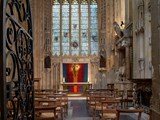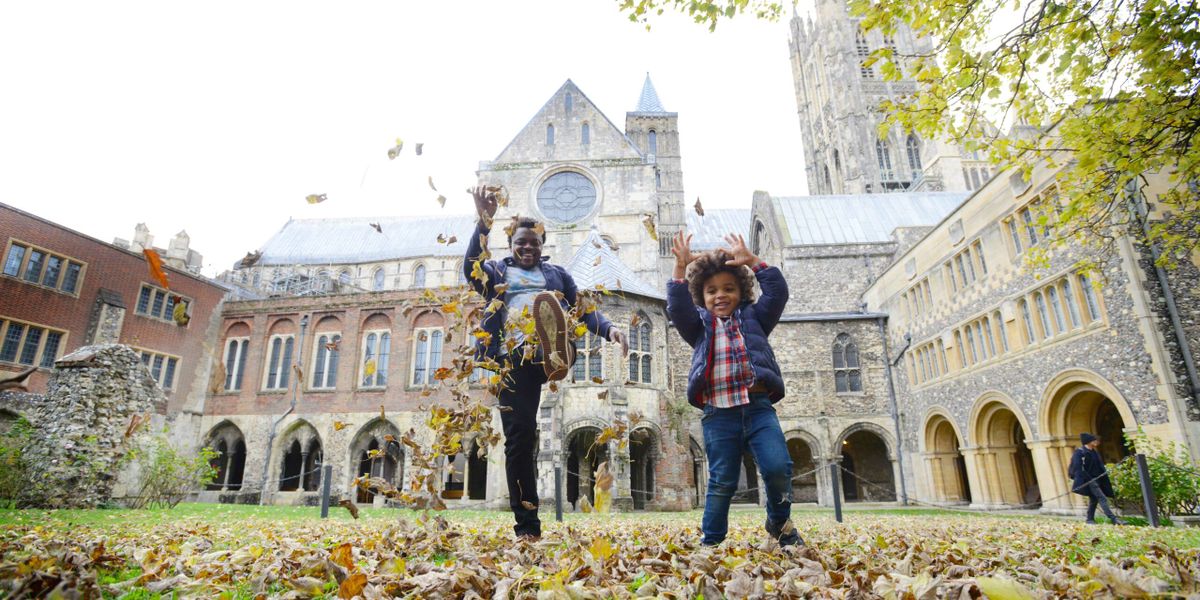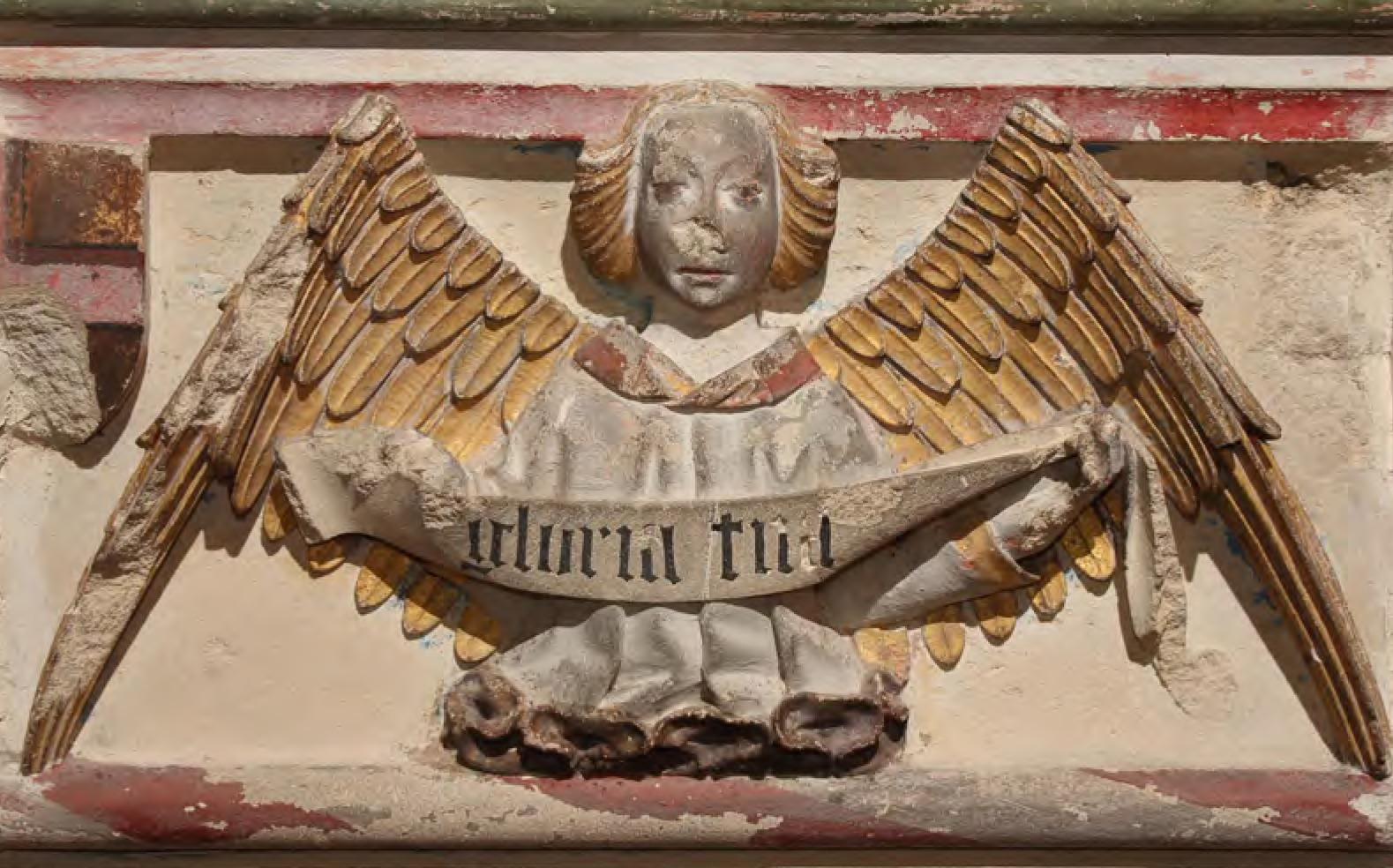For the first time in nearly 400 years, worshippers and visitors will see the exquisite carved frieze as intended
Angels Return to Cathedral's Lady Chapel
A restoration project begun more than 50 years ago will finally be completed next week, as four new carved stone Angels are carefully installed into a historic frieze in Canterbury Cathedral’s magnificent 15th-century Chapel of our Lady Martyrdom.
The newly-carved figures by artist Nina Bilbey will sit alongside five surviving historic carvings, replacing plain stone that was installed in the 1970s to fill areas that had been damaged in the late 17th century when four of the original angel carvings were obliterated by a wall-mounted monument.
This restoration project, enabled by an anonymous donor, will be completed during the week of 3rd June. This will be the first time in nearly 400 years that all nine angels are intact and visible in the Chapel.

The almost 4m wide frieze – a broad horizontal band of stone decoration - is a prominent feature of the Chapel of our Lady Martyrdom (also known as The Deans’ Chapel), and forms part of the main east wall, sited directly below the sill of the Chapel’s East Window. The frieze, as with the wider Chapel, was originally constructed in Caen stone from Normandy, and there is evidence from surviving paint traces that the angels would once have had a richly coloured polychromatic scheme.
Our Lady Martyrdom is one of the most regularly used Chapels for daily prayer at the Cathedral; holding Morning Prayer (Matins) and Said Holy Communion throughout the week. Reserved for private prayer throughout the day, it is not on the main visitor route, but is visible through the gate and stone screen.
The motivation of the frieze renovation project was liturgical, with the importance of the use of the space for worship a priority. The previous patched frieze was stark and intrusive to those worshipping within and observing the Chapel, as it was out of keeping with the rest of the circa 15th Century design.
There was very little evidence left of the features of the four original angels so, although the new carvings could not be exactly matched to the historic scheme, they have been thoughtfully designed so as to harmonize with the remaining historic carvings.
The Dean of Canterbury, David Monteith, said: “I am delighted that this careful studied work of restoration is complete, using the highest artistry and scholarship to achieve this 21st century intervention in such a historic site.
Our earthly worship connects us with the worship of heaven, often described as involving so many angels. We will take inspiration from these new carvings to offer our own heartfelt praise, joining with the song of the angels.”
Notes for Editors
The recent state of the frieze was due to modification of the Chapel in the late 17th century to accommodate a wall-mounted monument to Dean Turner, which significantly altered the design integrity of four of the nine Angels and their setting.
The Dean Turner monument was removed in the 1970s when the Chapel was restored, and at that time the Angel Frieze was ‘blocked out’ with new Lepine limestone. The work, whilst broadly aligning with the scale and dimensions of the lost carvings, did not seek to replicate or restore the four missing carvings.
In 2021, Canterbury Archaeological Trust was commissioned to prepare a Historic Building Record of the fabric, including measured drawings, which informed an ‘expression of interest’ brief submitted in January 2022.
In February 2022, the ‘expression of interest’ brief was issued to three experienced sculptor masons known to the Fabric Advisory Committee and Cathedral - of these three, designer Nina Bilbey was assigned to the project.
The Latin inscription on the scrolls of the angels displays a truncated form of the Sanctus.
Dr David Rundle, Lecturer in Latin and Manuscript Studies at the Centre for Medieval and Early Modern Studies at the University of Kent, provided assistance in both deciphering the surviving text, and in refining the proposed text.
This restoration project was fully funded by a private donor wishing to make a contribution to the continued restoration of the fabric of the Cathedral.
Stay in the loop
Sign up to our newsletter and stay up to date with all the latest events, news and offers
By adding my email I confirm my subscription to the newsletter and understand that the email address provided will be held by the Cathedral and the email service company (dotdigital) to use for distributing this newsletter only. For more information please see the Cathedral Privacy Notice.




